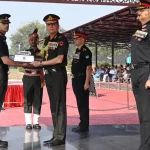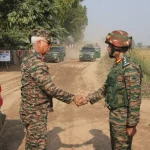The MARCOS (Marine Commandos) of the Indian Navy stand as a symbol of elite military prowess, renowned for their rigorous training and specialized missions. As operatives engaged in high-stakes operations, their compensation must reflect the extreme demands of their roles. Unraveling the financial aspects of a MARCOS Commando’s career reveals a structured salary that combines base pay, allowances, and various benefits—a comprehensive system designed to attract and retain some of the country’s most skilled personnel.
Introduction
MARCOS Commandos are India’s answer to modern military challenges, excelling in roles that span amphibious warfare, counter-terrorism, and unconventional operations. Their elite status comes not just from their training and missions but also from the recognition of their challenging duties through an impressive salary and benefits package. The salary structure for a MARCOS Commando offers insight into their status and the financial recognition afforded to personnel who risk their lives for national security. Here, we will dissect the components of their earnings, examining the various allowances and benefits that contribute to their overall compensation.
Historical Context
Formed in 1987, MARCOS emerged from the necessity of a specialized naval unit that could execute high-paced operations across diverse terrains, including water, land, and air. Taking lessons from elite forces globally, the inception of MARCOS set a new benchmark for military excellence in India. This transition from conventional naval operations to specialized warfare required not only skilled operatives but also a sustained commitment to training and personnel management.
Understanding the financial remuneration of these commandos involves examining the structure initiated by the 7th Central Pay Commission, which aimed to standardize salaries across various defense services while acknowledging the peculiar demands of specialized units like MARCOS.
Key Components of MARCOS Commando Salary
The varying components of the salary structure for a MARCOS Commando illustrate the financial framework that supports their austere lifestyle. Below, we delve into these components:
| Component | Amount (INR/month) | Details |
|---|---|---|
| Basic Pay | Rs. 25,000 to Rs. 27,000 | The base salary comparable to other Indian Navy personnel of similar rank. |
| MARCOS Allowance | Rs. 26,000 | This signifies the demanding nature of their duties, recognizing the specific challenges faced by commandos. |
| Ship Driver Allowance | Rs. 8,600 to Rs. 10,000 | This allowance is contingent upon the role played as divers or drivers within the unit. |
| Deployment Area Allowance | Varies by region: | Additional compensation based on geographical deployment: |
| – Hard Areas | 40% of Basic Pay | Designed for challenging terrains. |
| – Highly Active Field Area | Rs. 16,800 to Rs. 16,900 | For those operating in high-risk zones. |
| – Field Area Allowance | Rs. 10,500 to Rs. 10,700 | For personnel in moderately demanding operational environments. |
| – Peace Area Allowance | Rs. 35,000 to Rs. 35,600 | Provides compensation for less hazardous regions, highlighting the worth of all operational roles. |
| Special Forces Allowance | Rs. 25,000 to Rs. 30,000 | Reflects the specialized nature of their role within the armed forces. |
| Other Allowances | Diving, Parachute Allowances etc. | These allowances are attributed to specific qualifications and roles within the unit. |
While a basic salary of Rs. 25,000 to Rs. 27,000 may initially seem low, the complete earnings package transforms the financial outlook for MARCOS personnel.
Total Salary Range and Benefits
When we aggregate all components, a mid-level MARCOS Commando can anticipate total earnings ranging from Rs. 80,000 to Rs. 1.2 lakh per month, depending on rank, experience, and deployment location. Senior officers taking on critical roles in high-risk environments can command even higher salaries.
Benefits Breakdown
Beyond monetary compensation, the MARCOS Commandos enjoy a plethora of benefits designed to support their welfare and transition post-service. The following summarises some of the key benefits:
- Medical Care and Insurance Coverage: Comprehensive medical care is essential, considering the potential risks involved in operations. MARCOS Commandos receive free medical services, which extends to their immediate families.
- Housing Facilities: Service personnel are often allotted subsidized housing or given access to quarters that provide comfort and reduce financial burden.
- Canteen and Mess Facilities: To ensure that food and provisions are tailored to the needs of active personnel, subsidized canteen services are available.
- Pension Benefits upon Retirement: A pension scheme ensures financial security post-service, reflecting the government’s commitment to its armed forces.
- Special Risk and Hardship Allowances: These are particularly crucial for personnel operating in difficult deployments, thereby compensating them for additional stress and risks.
Statistical Data and Research Insights
To enhance our understanding of MARCOS salaries, we can look to various data points and figures. According to the Ministry of Defence reports, the allowances paid to MARCOS personnel have been structured to not only incentivize service but also to retain skilled operatives in an increasingly competitive landscape.
Moreover, the 7th Central Pay Commission indeed made adjustments specifically recognizing the arduous service of elite commando units, ensuring that the complexities involved in their deployments translate into better financial security.
Comparative Analysis
When comparing the earnings of MARCOS Commandos to their counterparts in other defense branches, significant differences emerge. For example:
- Army Commandos vs. MARCOS: While both functions demand exemplary skill, MARCOS personnel typically receive higher allowances linked to the aquatic operations and amphibious warfare insights where they operate.
- International Standards: When juxtaposed with similar elite forces globally, such as the US Navy SEALs or British SAS, Indian MARCOS appear relatively well-compensated. Global peers often undergo extensive selection processes while facing operational risks; hence, competitive salaries are crucial for attraction and retention.
Challenges and Solutions
Despite the lucrative salaries and benefits, MARCOS Commandos face unique challenges that may not be entirely addressed by compensation alone.
Key Challenges:
- High Operational Stress: The psychological toll of volatile environments is significant. Despite financial incentives, mental health resources are often crucial.
- Retention of Personnel: The rigorous demands lead to attrition, as operatives often seek alternatives after serving their commitments.
- Geographical Deployments: Constant movement between high-risk areas can disrupt family life, making retention difficult.
Solutions:
- Wellness Programs: Implementing comprehensive psychological support and counseling can help mitigate stress factors impacting MARCOS personnel and improve retention rates.
- Family Integration Initiatives: Programs to support families of commandos could aid in alleviating some of the stress associated with long absences.
- Career Development: Building pathways for career advancement within the services allows MARCOS personnel to envision a longer tenure within the armed forces.
Future Trends and Predictions
As the Indian socio-political landscape evolves, so do the demands on the armed forces. The following trends may shape the future of MARCOS Commandos:
- Increased Technological Integration: As warfare becomes increasingly tech-driven, ongoing training in cyber warfare and advanced military technology will be essential.
- Focus on Mental Health: Recognizing the importance of mental health in military effectiveness may lead to enhanced benefits and support structures.
- Greater Emphasis on Internal Security: With increasing threats to national security, elite units like MARCOS may see a diversified range of missions, heightening operational demands.
Conclusion
The salary structure of MARCOS Commandos reflects not only their elite status but also acknowledges the sacrifices they make in service to the nation. With a robust combination of base pay and extensive allowances tailored to various operational realities, these commandos enjoy a compensation package worthy of their skills and commitments.
Addressing the unique challenges they face and adapting to future demands can enhance their operational effectiveness and morale. The continuous evolution of their remuneration and support systems will play a critical role in shaping the future of this formidable unit within the Indian Navy.
Ultimately, recognizing the importance of specialized forces like MARCOS is not merely about numbers; it’s about upholding the honor, dedication, and sacrifices that these commandos make daily to safeguard national integrity and security.













